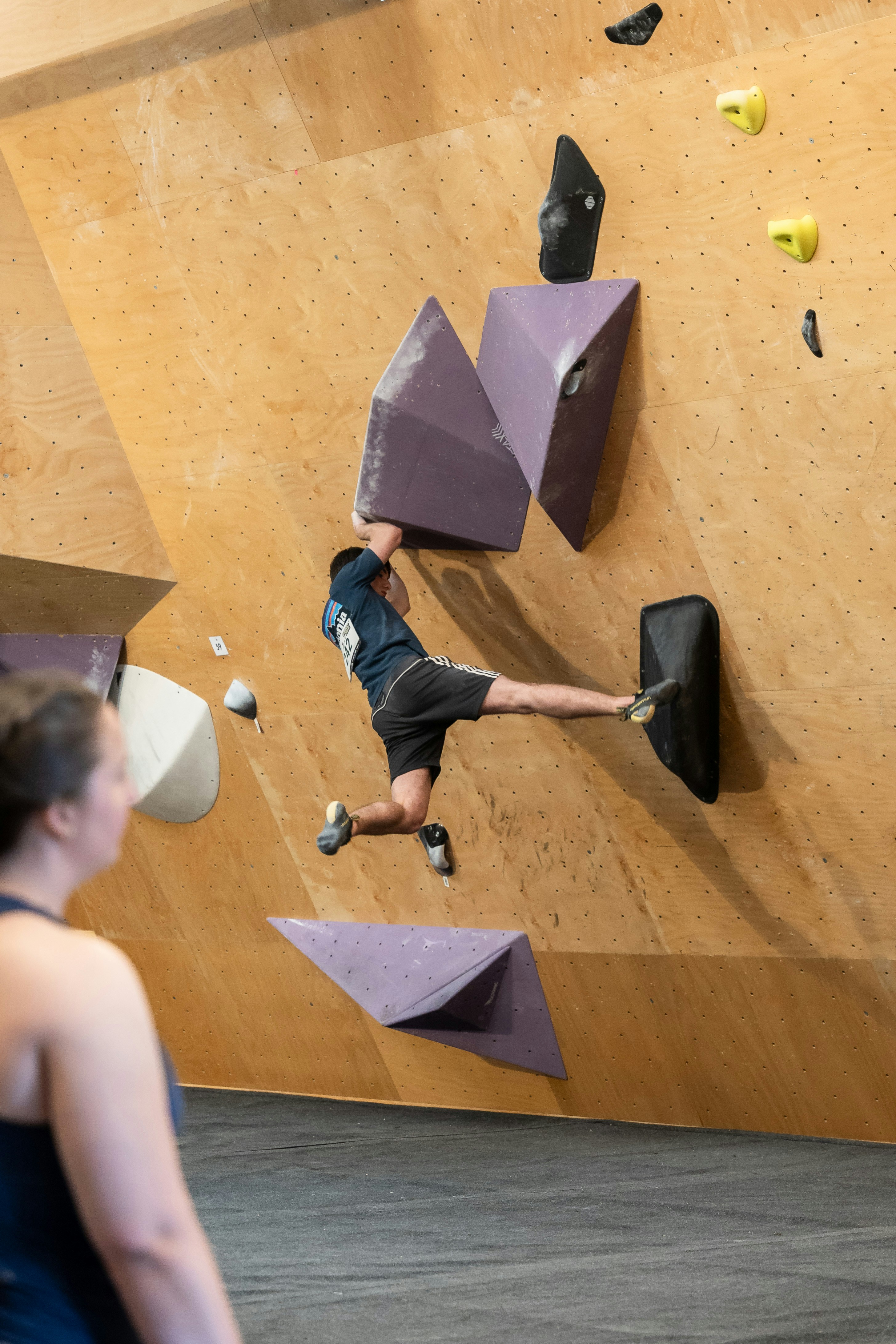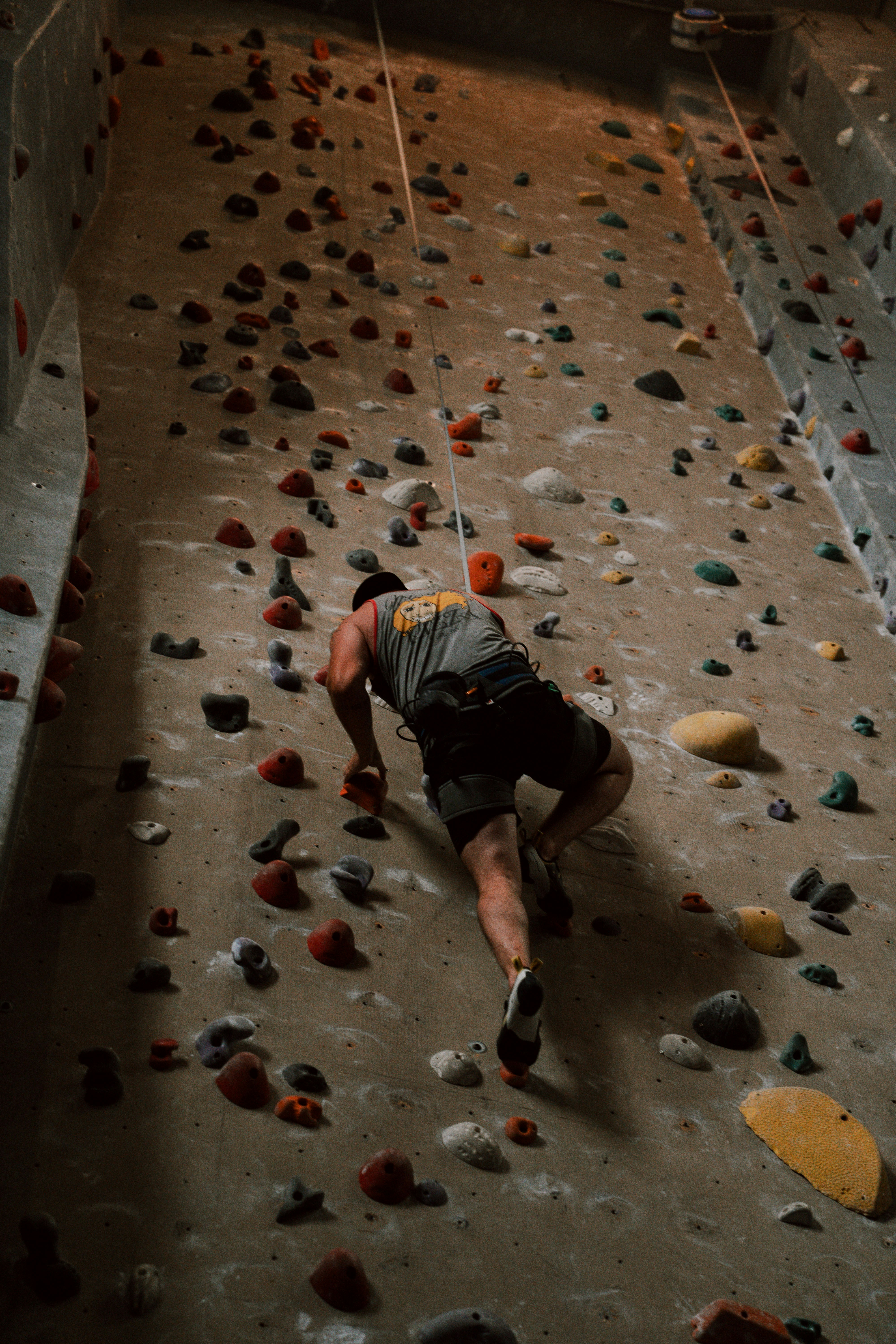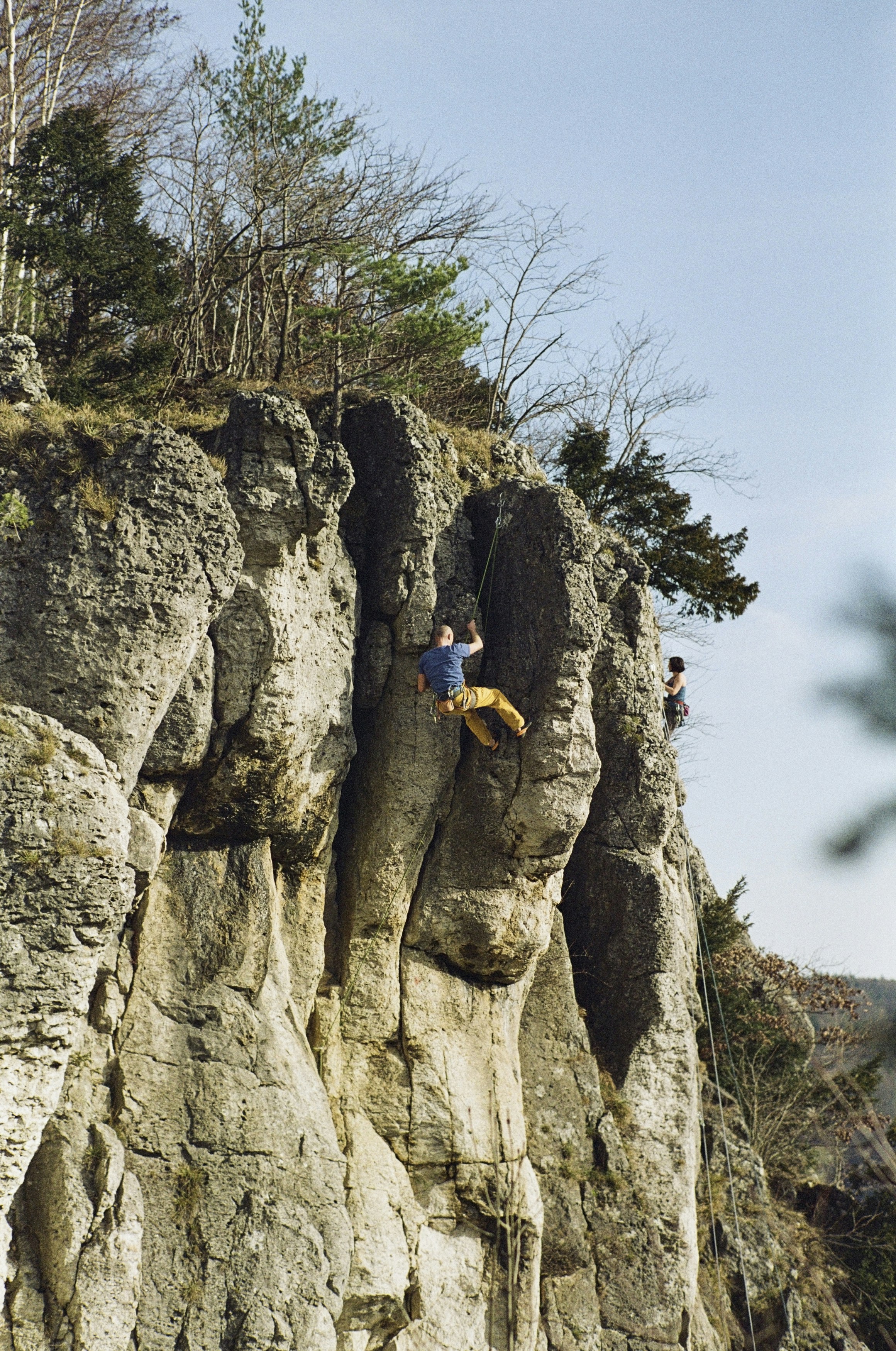We're halfway through the 2025 IFSC World Championships in Seoul, and if you've been following the action, you know this isn't playing out like anyone expected. Yesterday's men's speed finals delivered drama that perfectly encapsulates what makes this sport so compelling, while the lead semifinals showed us tactical approaches that are reshaping how we think about competitive route reading.
The timing couldn't be better to pause and analyze what we're seeing. With women's boulder semifinals happening today and men's finals coming up Sunday, the patterns emerging from this championship are revealing fundamental shifts in how elite athletes approach competition climbing in 2025.
The Speed Revolution We Didn't See Coming
Thursday's men's speed finals completely rewrote the narrative around this discipline. The traditional power-focused approach that dominated speed climbing for years is giving way to something more nuanced - a combination of explosive starts with incredibly precise footwork in the middle sections.
What stood out wasn't just the times, but how differently athletes were attacking the route. The winning approach involved a calculated risk in the middle section, sacrificing pure speed for positioning that allowed for a more explosive finish. This tactical evolution suggests that speed climbing is developing the same strategic depth that we associate with bouldering and lead.
The women's speed finals on Wednesday showed similar trends. Athletes who succeeded weren't necessarily the most powerful, but those who could maintain precision under the pressure of maximum velocity. This is fundamentally changing how speed specialists train, with more emphasis on neuromuscular coordination and less on pure explosive power.
For climbers training for local competitions, this evolution in speed climbing offers valuable insights. The principle of maintaining technique under pressure applies whether you're racing up a 15-meter wall or working your project at the local gym. Speed climbing is teaching us that efficiency beats raw power when both matter simultaneously.
The psychological aspects are equally fascinating. Speed climbing's binary nature - you either fall or you don't - creates mental pressure that's different from bouldering or lead. Athletes who excel are developing specific mental strategies for managing the anxiety of essentially sprinting vertically while maintaining perfect technical execution.
Lead Climbing's Tactical Renaissance
Yesterday's lead semifinals showcased something we haven't seen consistently in international competition: athletes actively choosing to climb differently based on their position in the starting order. Later starters were making strategic decisions about where to commit energy based on what earlier climbers had accomplished.
This represents a fundamental shift from the traditional approach of climbing your hardest regardless of what others do. Athletes are developing real-time tactical awareness that resembles team sports more than individual athletic events. The ability to process information about competitors' performances and adjust strategy accordingly is becoming a crucial skill.
The route itself played perfectly into this dynamic. The crux section around the two-thirds mark was positioned exactly where tactical decisions have maximum impact. Athletes who reached it fresh had different options than those who arrived already pumped, creating multiple viable strategies for the same problem.
What's particularly interesting is how this tactical evolution is changing training approaches. Athletes aren't just practicing routes anymore - they're practicing decision-making under fatigue, developing the cognitive skills necessary to analyze and adapt mid-climb based on changing circumstances.
For recreational climbers, these tactical concepts translate directly to project work and even gym climbing. The ability to assess your energy state and choose appropriate strategies accordingly can make the difference between success and failure on challenging routes. Competition climbing is teaching us that smart climbing often beats strong climbing.
Bouldering's Technical Complexity Explosion
As we head into today's women's boulder semifinals, the problems we've seen in qualifications represent a new level of movement complexity. These aren't just hard moves - they're requiring combinations of techniques that force athletes to demonstrate mastery across multiple movement vocabularies within single problems.
The qualifying problems featured what could best be described as "technical coordination challenges" - movements that require precise body positioning, grip adaptation, and momentum management simultaneously. Athletes who succeeded weren't necessarily the strongest, but those who could process and execute complex movement sequences quickly and accurately.
This evolution reflects broader trends in route setting where setters are creating problems that test athletic intelligence as much as physical capabilities. The days of pure power problems or pure technique problems are giving way to challenges that require synthesis of multiple skills under pressure.
The preparation strategies we're seeing from top athletes reflect this complexity. They're spending significant time in route reading, not just analyzing holds but mapping out body positioning sequences and identifying potential micro-adjustments. This level of analytical approach to bouldering was uncommon even five years ago.
Recovery management between problems has also evolved significantly. Athletes are using specific breathing techniques, targeted stretching protocols, and even brief meditation between attempts. The mental and physical demands of these complex problems require more sophisticated recovery strategies than traditional bouldering.
The Garnbret Factor and Strategic Season Management
Janja Garnbret's approach to this championship season exemplifies how elite athletes are thinking strategically about competition scheduling and peak performance timing. Her decision to compete in only select World Cup events while focusing on the World Championships represents a calculated approach to managing both physical and mental resources.
This strategic periodization is becoming more common among top athletes who recognize that trying to peak for every event throughout a long season is counterproductive. Garnbret's selective competition schedule allowed her to arrive in Seoul with maximum motivation and minimal accumulated fatigue.
Her technical approach in the events we've seen so far demonstrates another evolution in elite competition climbing. Rather than relying on superior physical abilities, she's showing masterclass-level problem-solving skills, often finding solutions that other athletes miss entirely.
The psychological pressure she faces as the defending champion and overwhelming favorite adds another layer of complexity. Her ability to manage expectations while maintaining the aggressive, creative climbing style that made her dominant is something every competitive climber can learn from, regardless of their level.
For the climbing community, Garnbret's approach offers insights into long-term athletic development. The principle of strategic focus - choosing when to compete and when to train - applies whether you're preparing for world championships or working toward your first competition experience.
Technical Innovation on Display
The Seoul World Championships are showcasing several technical innovations that are likely to influence competition climbing well beyond this event. The hold designs and route setting approaches represent the cutting edge of what's possible in competitive problem creation.
The integration of dual-texture holds in several of the problems is forcing athletes to develop grip adaptability in real-time. These holds require different contact strategies depending on which surface you engage, adding a layer of tactical decision-making to what might otherwise be straightforward moves.
Route setting philosophy has evolved toward creating problems that tell movement stories rather than simply presenting physical challenges. The best problems in Seoul have clear narrative arcs - setup moves that establish positioning, development sections that build complexity, and resolution sequences that require commitment and precision.
This storytelling approach to route setting creates more engaging spectator experiences while simultaneously testing athletes' ability to read and adapt to extended movement sequences. The problems feel more like conversations between setter and climber rather than simple physical tests.
Technology integration, while subtle, is also visible throughout the championship. Timing systems, video analysis capabilities, and even grip tracking are providing unprecedented data about how elite athletes approach complex problems. This information feeds back into training and route setting, creating continuous evolution in the sport.
Mental Game Evolution Under Pressure
The psychological demands visible in Seoul are pushing athletes to develop mental skills that extend far beyond traditional sports psychology. The format changes coming for Los Angeles 2028, where each discipline will crown separate Olympic champions, add additional pressure layers to an already intense competitive environment.
Athletes are demonstrating remarkable composure under circumstances that would have been overwhelming just a few years ago. The combination of technical complexity, tactical awareness requirements, and physical demands creates stress that requires sophisticated management strategies.
Breathing techniques, visualization practices, and real-time anxiety management are becoming as important as physical preparation. Athletes who excel are those who can maintain analytical thinking while managing the physiological arousal that comes with high-stakes competition.
The community aspects of competition climbing create additional psychological complexity. The encouragement and energy from other competitors can be incredibly motivating, but it also creates social pressure to perform not just for personal goals but for community expectations.
Recovery between attempts and events requires mental as well as physical strategies. Athletes are developing routines that help them reset psychologically, managing the emotional roller coaster of success and failure that defines competitive climbing.
Training Implications for Every Climber
The technical and tactical innovations on display in Seoul offer valuable insights for climbers at every level. The emphasis on movement quality, tactical awareness, and technical adaptability translates directly to climbing improvement regardless of competitive aspirations.
Grip variability training, inspired by the dual-texture holds used in competition, can be practiced in any gym. Varying your grip position, contact pressure, and hand orientation on familiar holds develops the adaptability that modern competition climbing demands.
Route reading skills demonstrated by elite athletes can be practiced on any problem. Spending time analyzing movement sequences before attempting climbs, identifying potential micro-adjustments, and developing backup strategies all contribute to climbing improvement.
The tactical awareness visible in lead climbing competitions applies to outdoor project work and even gym climbing. Learning to assess your energy state and choose appropriate strategies based on circumstances can dramatically improve success rates on challenging routes.
Mental training techniques used by world championship athletes are accessible to recreational climbers. Breathing exercises, visualization practices, and pressure management strategies all contribute to climbing performance regardless of the setting or stakes involved.
Looking Ahead: The Future Taking Shape
As we move toward this weekend's boulder finals, the patterns emerging from Seoul are showing us what competition climbing will look like in the years ahead. The technical complexity, tactical sophistication, and mental demands are all trending upward, creating opportunities for athletes who embrace adaptation and continuous learning.
The separation of disciplines for Los Angeles 2028 will likely accelerate these trends. Athletes who can specialize in specific aspects while maintaining competency across all areas will have significant advantages. The days of pure generalists may be giving way to strategic specialists.
Technology integration will continue expanding, providing both athletes and coaches with increasingly sophisticated feedback and analysis tools. Training will become more data-driven while simultaneously requiring greater emphasis on creativity and adaptability.
The growth in participation and spectator interest creates opportunities for the climbing community to continue evolving. Better funding, more sophisticated training resources, and increased media attention all contribute to raising the overall standard of the sport.
For climbers following the championships from their local gyms, the message is clear: embrace complexity, develop tactical awareness, and remember that climbing intelligence often matters as much as climbing strength. The future belongs to athletes who can think as well as they can climb.
The Seoul Standard
The 2025 World Championships in Seoul are establishing new standards for what elite competition climbing looks like. The combination of technical innovation, tactical sophistication, and athletic excellence creates a template that will influence competitions, training methodologies, and route setting for years to come.
As we head into the weekend's boulder finals, we're not just watching competitions - we're witnessing the evolution of sport climbing in real-time. The athletes, setters, and organizers in Seoul are writing the next chapter of what this sport can become.
Whether you're competing locally, working projects at your gym, or following elite competition from afar, the innovations and insights emerging from Seoul offer opportunities to engage with climbing in more sophisticated and rewarding ways. The standard is being set, and it's higher than we've ever seen before.
The question isn't just who will win this weekend's finals - it's how the lessons and innovations from Seoul will ripple through the climbing community, raising the level of technique, tactical awareness, and athletic excellence for everyone who touches rock or plastic in pursuit of that perfect send.


